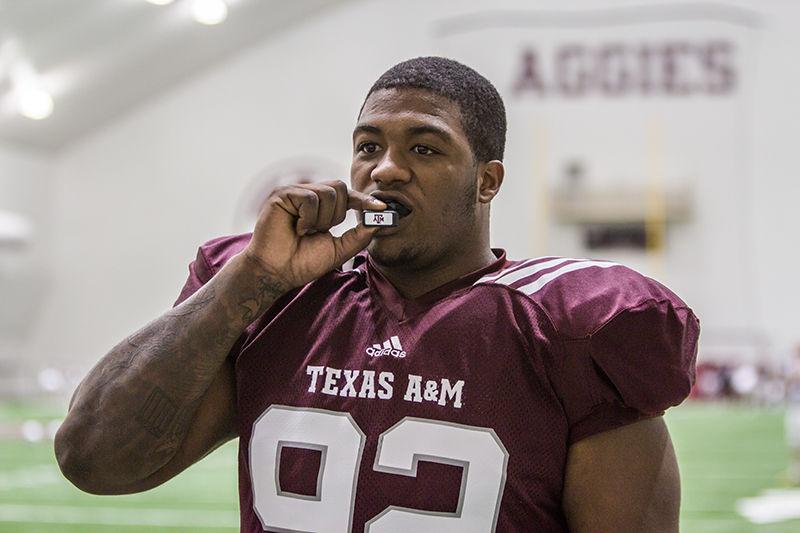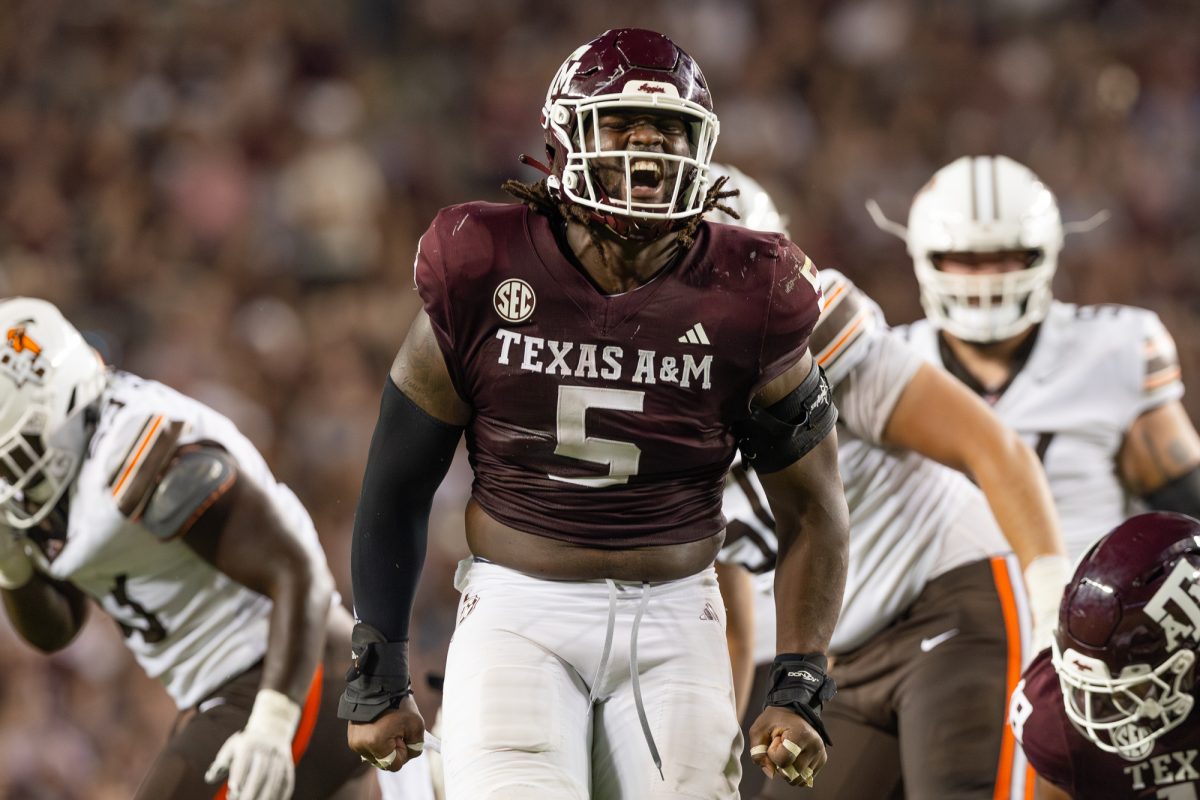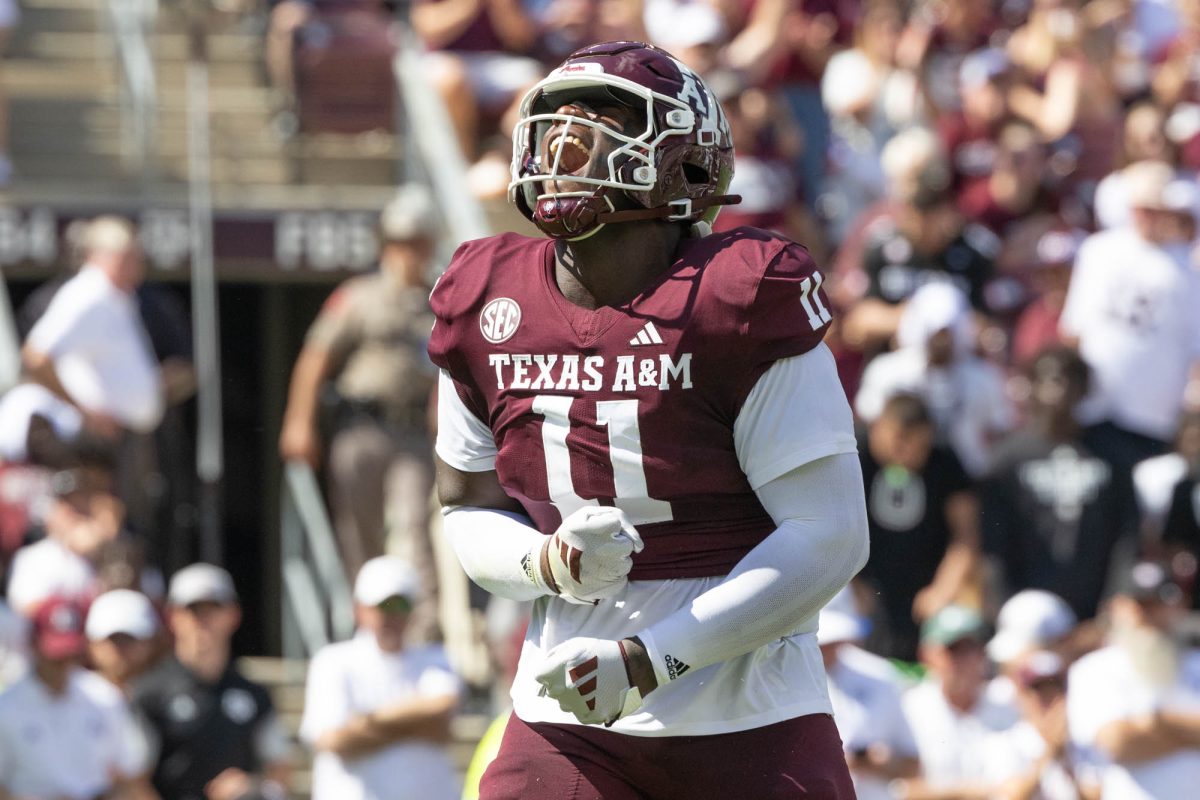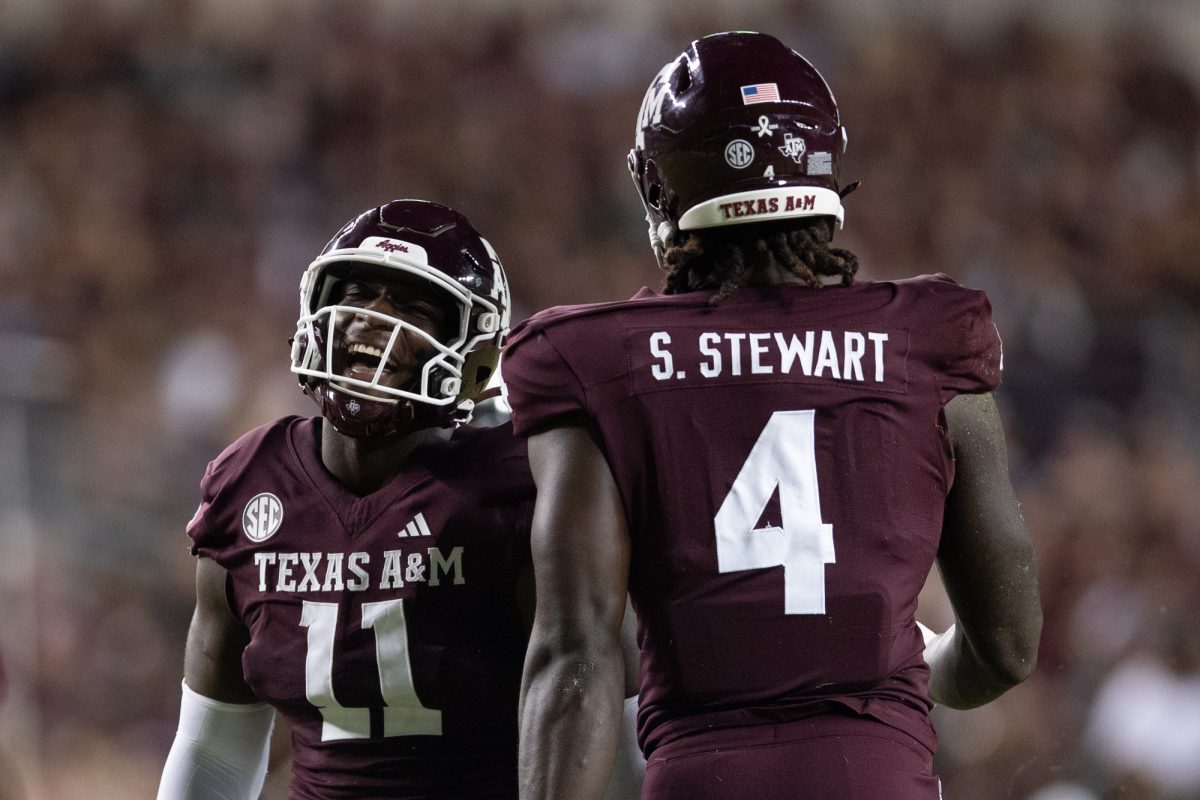The Texas A&M football team has joined the push against brain injuries in football with a new technological initiative to monitor athletes on the field.
The Texas A&M football team has entered a preliminary agreement with i1 Biometrics to test its new Vector Mouthguard technology. The mouthguards, which use “ESP Chip Technology” to record the impacts of collisions to the head and brain, are being worn by 15 players during spring practices, with their data returns monitored by the football training staff.
The Aggies join the football programs at the University of South Carolina, University of Kansas and LSU. Many high schools across the country have also announced a partnership with i1 to wear the new technology.
A recent study conducted by researchers at Harvard and Boston University states even though education and awareness of the symptoms and consequences of concussions are on the rise, the number of actual diagnosed injuries remains shockingly low.
The report states that there’s an average of about 27 “suspected concussions” or “dings” for every actual diagnosed concussion across the high school athletes studied, and the numbers are highest among linemen, although violent collisions are less common. New rules to limit contact have been put in place across the country in college and high school, but according to the study, those regulations might be focusing on the wrong aspect of contact.
“Understanding that the seemingly routine contact experienced by linemen may be leading to symptoms, it is important that these rules clearly define what is meant by contact practices in order to reduce the brain trauma experienced by all athletes, including linemen,” the report stated.
Jesse Harper, CEO of i1 Biometrics, said his company branched off from the parent company, Bite Tech, three years ago for the sole purpose of developing the new technology to better diagnose injuries in sports. Concussions were their first target.
“What we’re doing here deals with a huge technological aspect — everything from cloud infrastructure to microchips, an entirely new set of challenges that a standard mouthguard company wasn’t ready to meet,” Harper said. “We’re basically taking a smartphone and putting it in an athlete’s mouth, in a very crude way of explaining it.”
The mouthguard connects to devices held by sideline personnel, such as smartphones or tablets, and delivers thousands of data points and notifications for players of concern over the course of a game or practice. These data points can also be viewed in a cumulative format to study the long-term effects on a player.
Harper, a former player and coach himself, said the last thing he wants is the game he loves to be turned into a shell of its former self, as many argue new regulations will result in.
“This is something that is very near and dear to me,” Harper said. “We don’t want to see the sport watered down to where it’s like flag football, but we’ve got to do a better job of keeping these players safe.
David Weir, head athletic trainer for football, said the data produced is much better than what was provided by previous methods, such as sensors inside players’ helmets.
“As we continue to identify and treat concussions, it’s important that we look not only at the isolated events, but also the cumulative effects,” Weir said. “This technology allows us to track the amount of contact for the positions that might not suffer a big single hit, but many smaller ones that, over time, might result in some post-concussive type symptoms.”
The results of the data aren’t fully conclusive yet, as the Aggies have only worn the devices for a few weeks, but Weir said they will continue to evaluate the thousands of data points they receive.
“We looked at guys that have had a history of concussions, and those that are in vulnerable positions,” Weir said. “The company is still working through cleaning up and tweaking the technology, and being able to provide notifications, and we’re working through that to see where it all goes.”
While Weir said no official decision has been made on whether the team will continue to wear the equipment in the fall, he cannot argue with the new perspective he has seen from the short time using the technology in the spring.
“This technology gives us another set of eyes and another method of tracking these types of blows throughout a practice or game,” Weir said. “It notifies us of concerns so we can follow up with student athletes to see if they are suffering from a concussion.”
The Aggie football team will continue to wear the Vector Mouthguard for the duration of their spring workouts, and then evaluate the benefits of their continued use prior to the opening of fall camp in August.
A step toward safer football?: A&M adopts mouthguards made to spot concussions
March 31, 2015
Photo by Allison Bradshaw
Defensive lineman Alonzo Williams is one of the A&M football players testing the Vector Mouthguard during spring practices.
0
Donate to The Battalion
$2790
$5000
Contributed
Our Goal
Your donation will support the student journalists of Texas A&M University - College Station. Your contribution will allow us to purchase equipment and cover our annual website hosting costs, in addition to paying freelance staffers for their work, travel costs for coverage and more!
More to Discover
















